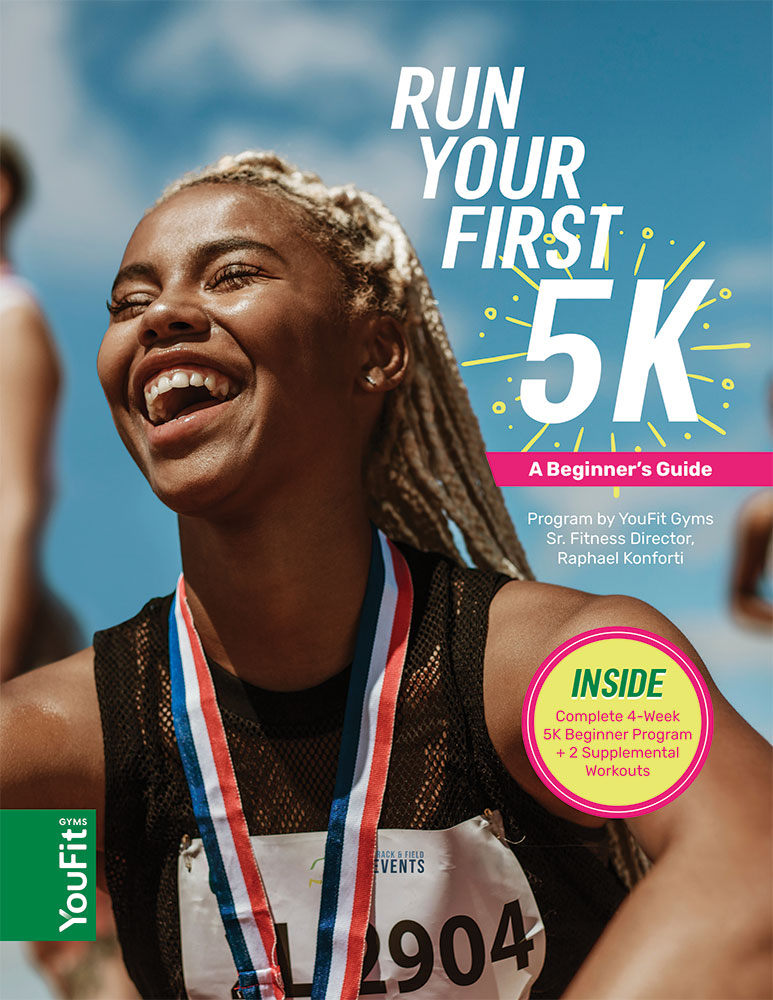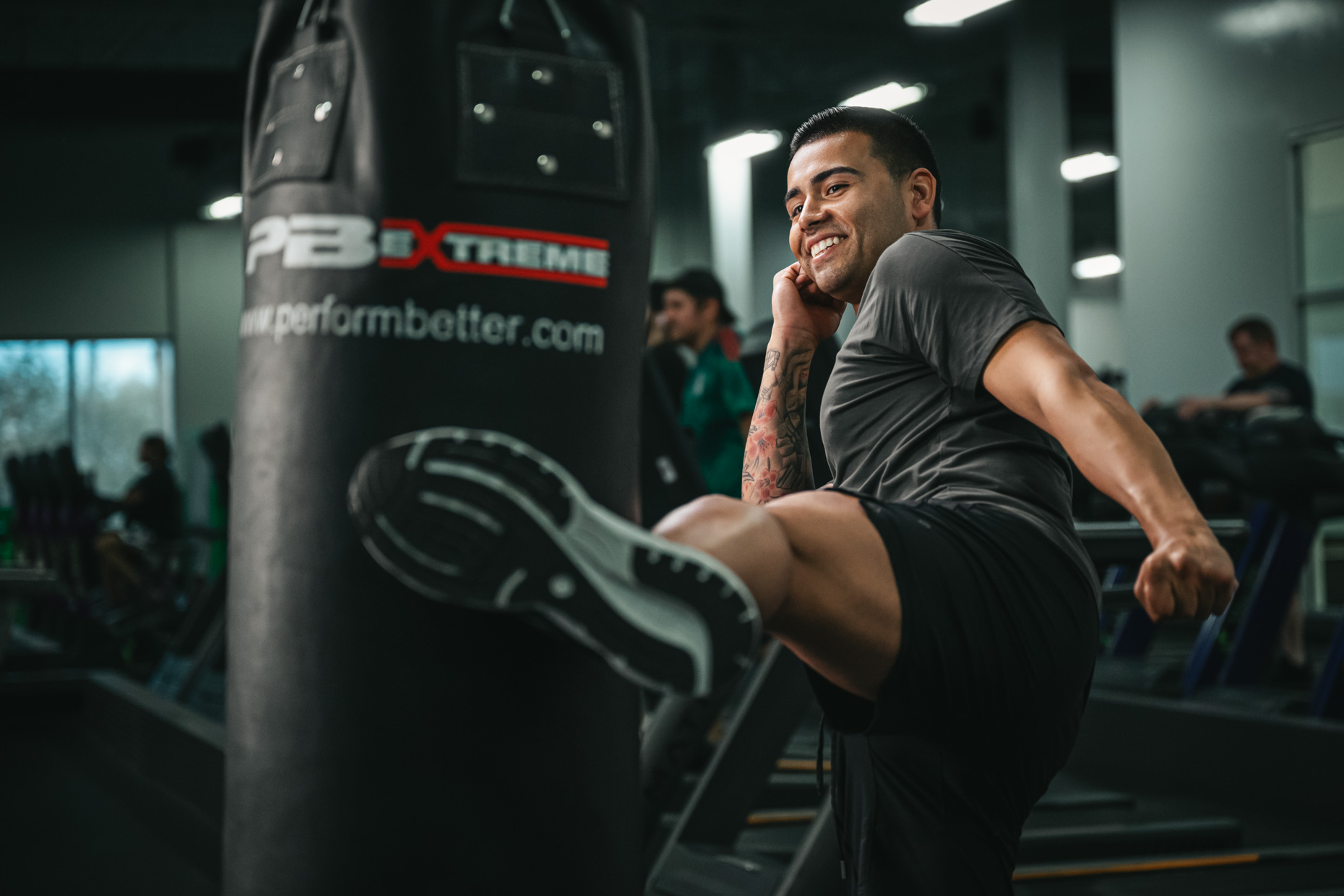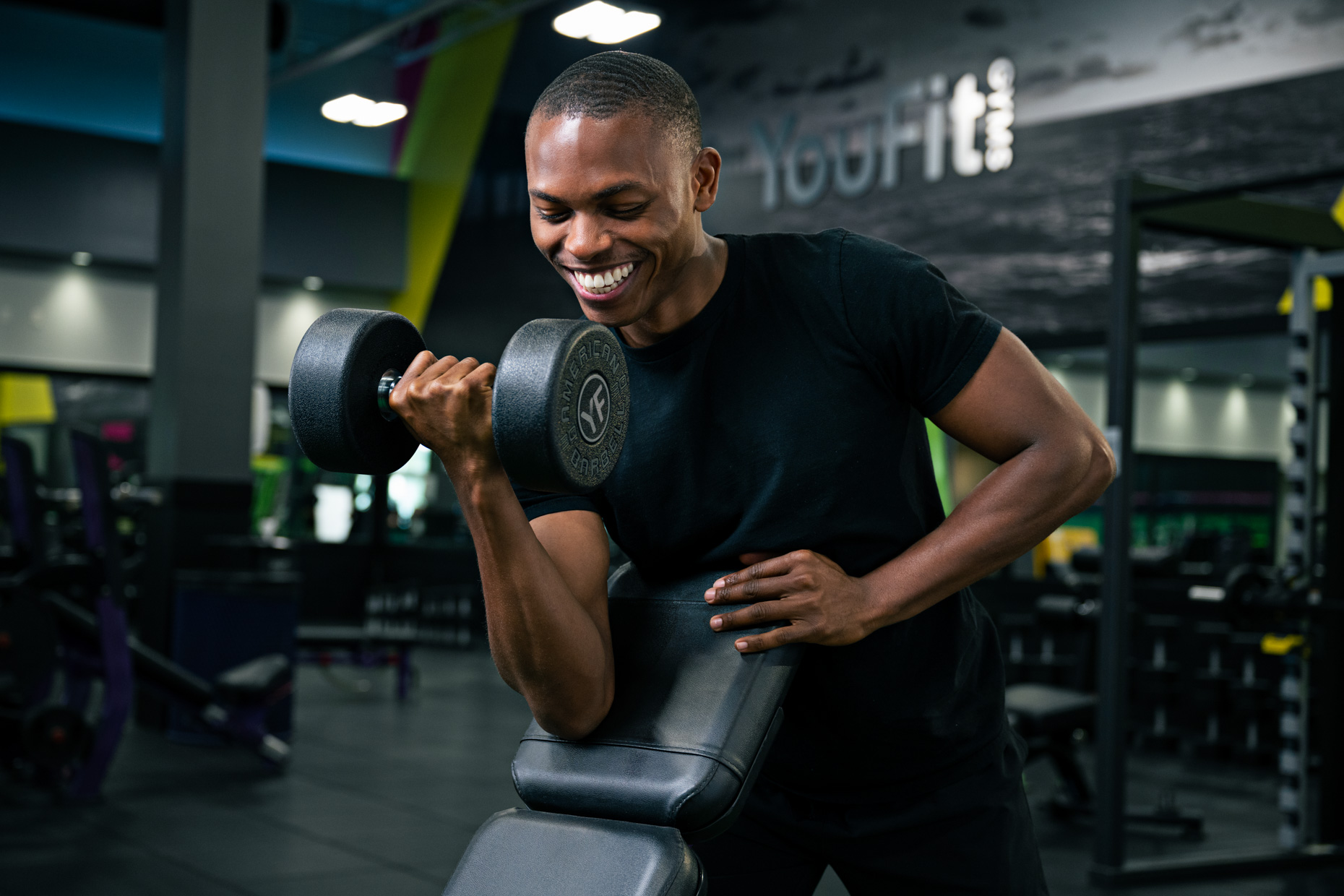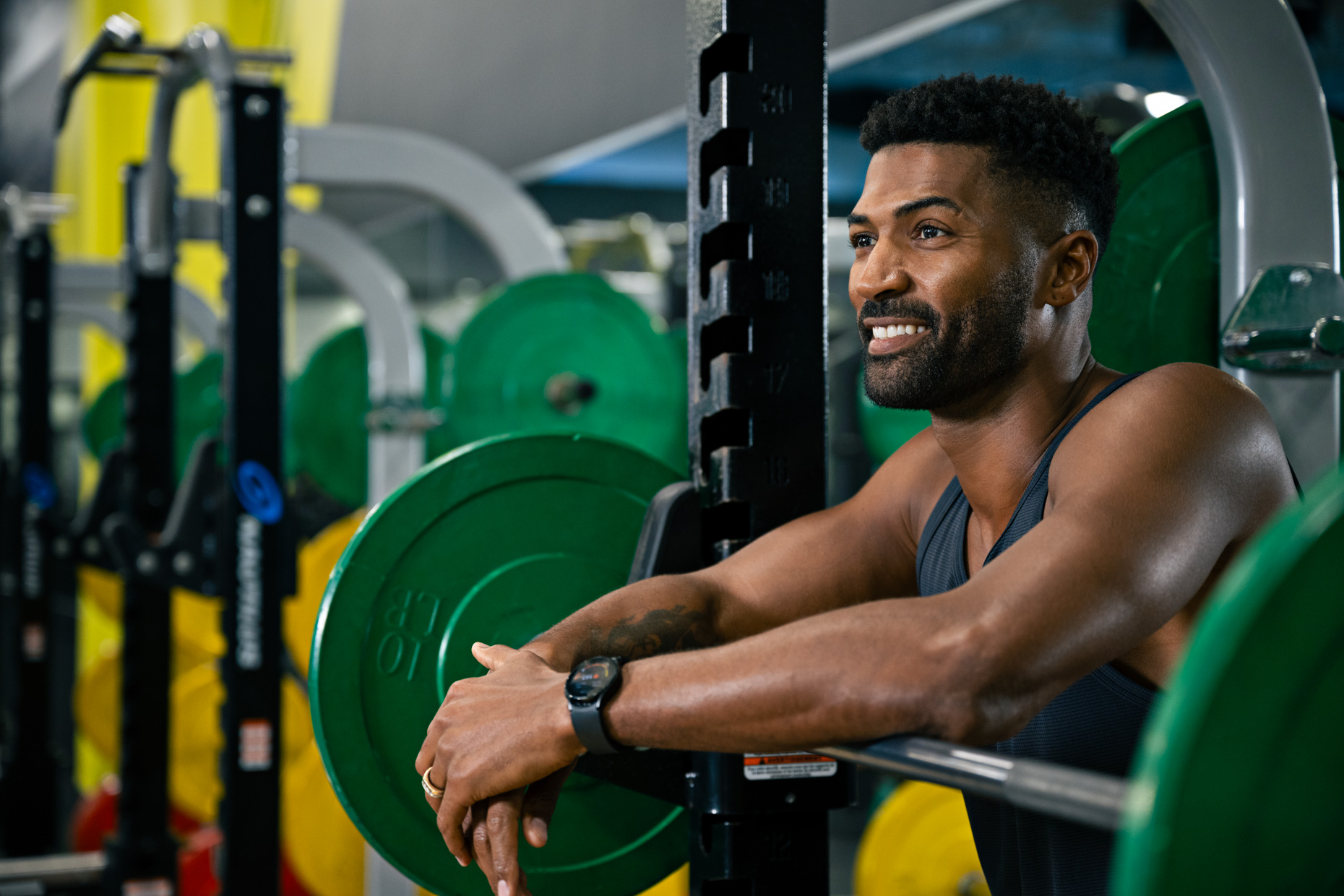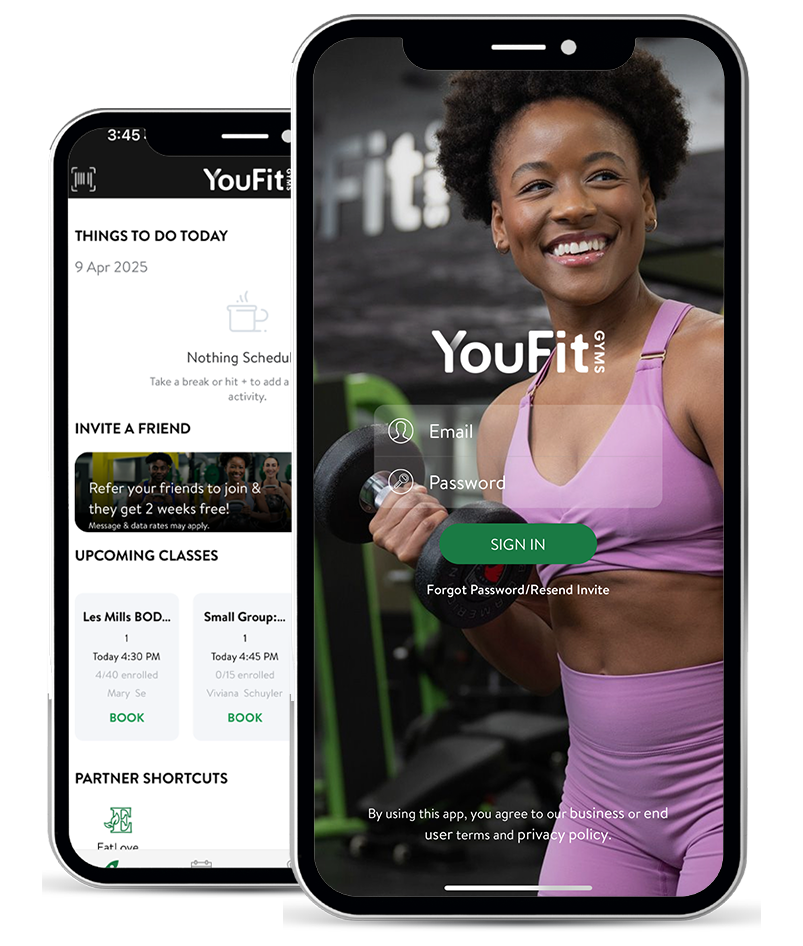Ready to start running? A 5K race makes a great goal for anyone who’s new to running. Teaching yourself a new habit is hard, so having a time-based goal keeps you motivated. Races are always planned well in advance so you’ll have a specific date to shoot for. In fact, YouFit’s new 5K running program will get you from the sofa to the finish line, with enough energy and new skills to enjoy it. (Really!) Start here for basics.
What is a 5K?
A 5K run is a long-distance 5 kilometer race, which works out to be just about 3.1 miles. It’s often the first race new runners train for. Some choose to progress to half marathons or full marathons, but many runners stick to this achievable level. Often called “fun runs” you’ll find tons of opportunities to join in 5Ks all over the country, the world even. (The World Sports Group lists more than 13,000 runs in the US for the year 2023 alone! Find one near you here.) Many runs have themes such as a Turkey Trot (on Thanksgiving), fundraising (for schools, hospitals, non-profit organizations) or a festive vibe where runners dress up in tutus, make their way through obstacles or mud, boogie for miles through night time disco parties, or swirl in an endless stream of bubbles in a Bubble Run. That’s just the beginning. Whether you’re looking for a straight up run or a festive party feel, the opportunities are endless. Many 5K events also include a separate 1 mile course or a children’s race on the same day. (It’s less common for full marathons to include a party theme but not unheard of.)
Tips on Getting Started
Set a reasonable goal.
Most first time runners should have a simple goal for their 5K: to finish. That’s it! No land speed records. Just glide across the finish line, even if that means walking, and here’s the important part: feel triumphant. It’s a big deal to complete a 5K and something to celebrate! A few timing tips to keep in mind:
Daily runners usually clock a 9-12 minute mile, which means a 5K takes them anywhere from 28-37 minutes.
Walkers who keep a brisk pace usually cover a mile in 15 minutes, which means they’ll wrap up a 5K race in 45 minutes to an hour.
If you’re new to running, you’ll likely use a combination of running and walking, so plan accordingly.
Get good shoes.
If this is your first pair of running shoes, go to a running shoe store where professionals will fit you properly. They’ll measure your foot, watch you walk, run and ideally even do it on an incline and decline. From there you’ll have the opportunity to try on many styles until you find one that fits and supports your foot’s unique needs. Yes this pair of running shoes will cost more than a bargain online BUT you’ll protect your whole body this way, from the foot up. (And once you find a model you love, you can scour the interwebs for a deal next time. Good shoes last about 6-9 months, and don’t forget that most running shoe shops also accept old shoes to be recycled!)
Don’t fall for gimmicks.
Other than the shoes, you really don’t need a lot of specialized gear. For example, just say no to a belted water bottle because you’re running for less than an hour at a time. Plus, 5k races offer cups of water along the route and again at the finish line. Now, if getting gussied up makes running more fun, absolutely go for it. But don’t let anyone convince you that you MUST spend hundreds of dollars on extras.
Block out time for training.
When life gets busy, guess what falls off the to-do list first? Exercise! That’s why some runners swear by getting outside first thing in the morning. Others, especially people who work from home, see a run/walk as a surprisingly effective midday pick me up. Still others like to shake off the day by training after work. Figure out what works best for you and stick to it.
Lay out your running clothes the night before.
You won’t believe how much time you can waste rummaging around in your closet trying to find those darn shorts. Save yourself the aggravation, and the time you could’ve spent training, by getting organized earlier.
Practice running in all kinds of weather.
On the day of the race it might rain. It might be windy. What if it’s surprisingly hot? It’s a good idea to have confidence in your abilities no matter what happens in the sky.
Drink extra water.
Your muscles are going to be working harder than usual, and that can lead to fatigue, dehydration and soreness. Everyone knows we should all drink more water, but here’s a practical place to start: drink a full glass when you wake up, and another before dinner. That’s it! Drink as many beverages as you like during the day but just adding these two glasses of water will really help get you into a better hydration habit.
Mind your muscles.
Expect to be sore. Two remedies that really work are:
- Soaking for 20 minutes (or more) in a bath with epsom salt. Use 2 cups of epsom salt for a standard bathtub, and more for extra large soaking tubs.
- Stretching. Your hamstrings and back take the brunt of it when running, so give them relief like this: lay down on your back with your hips as close to the wall in front of you as possible. Your heels should rest on the wall with your legs at a 90 degree angle. Stay here for at least 20 minutes. If your back starts to spasm, bend your knees. Breathe.
Consider cross training.
To avoid overtaxing your muscles and joints, exercises like yoga and pilates can keep your momentum going on off days, or as an occasional replacement workout to running. You’ll still build strength and endurance, only without pounding the pavement. That’s a win-win for many new runners.
Make a plan to celebrate afterward.
We can’t stress this enough: running your first 5K is a big achievement! Don’t skimp on the afterparty plans. Do soak in a shower or tub first (see epsom salt above) but when you’re ready to meet the world again, plan a nice dinner with friends or family. Toast to your success and make plans for your next race. Maybe someone at your table will get inspired and join you.
A note for future marathoners
If your goal is to compete in half or full marathons, it’s especially important to participate in a few 5k runs while you train. That way you get the hang of how races work. How early to arrive, where to get your number, where to line up, how to attach the tracking device to your running shoes and so on. There’s a whole culture to learn and you want to do it ahead of time. You’ll likely be nervous on the day of a big marathon race and even a little know-how will help settle your nerves.
Ready to go?
Download YouFit’s brand new Guide to Running Your First 5K right here. You’ll get a training schedule plus two important supplemental workouts. Follow the plan like a recipe and you’ll be amazed at your own results.
